Snapdragon: description and cultivation

Growing a snapdragon flower in a summer cottage or garden plot allows you to paint the landscape in the most incredible colors. This plant in an ampelous or erect form can become an incredibly beautiful addition to a flower bed or diversify the decoration of a terrace in hanging pots, it is often planted as a tapeworm on a lawn, used as part of mixed plantings and as a window sill decoration at home. In any status antirrinum (this is the scientific name of the flower) demonstrates the ability to long and abundant flowering.
How is it planted and what kind of care does this culture need? Where to sow seeds and is it worth doing before winter? During what period is it recommended to plant antirrinum, growing it for seedlings? All these issues require the most detailed consideration, since the snapdragon is considered a thermophilic species, it is very sensitive to growing conditions in the open field.

Peculiarities
Plants belonging to the genus Antirrhinum - herbaceous and subshrub, they produce beautiful, unusual looking flowers throughout most of the warm season. Large antirrinum is the most popular in culture, it is a thermophilic flower, found naturally in the USA, Mexico, other species can be found in Europe and Asia. All in all it is known 22 species of wild plants of this genusgiving red, yellow, blue, purple flowers. Hybrid and varietal snapdragons are white, orange, pink, lavender.
Antirrinums grow up to 100 cm, dwarf varieties are more compact, only 15-20 cm high. Bushes of tall species have a pyramidal shape, ampelous and dwarf are more spreading, abundantly branching, covered with finely grooved large leaves.
An inflorescence in the form of a brush is formed by mid-June; it can have double or simple petals on each flower.


In nature, antirrinum does not require regular sowing, it is perennial. In garden culture, it is most often planted as an annual species, only occasionally using the ascended self-garden for further cultivation. Semi-shrub forms in a southern climate do not need to be removed from the soil for the winter.
All types of snapdragons are usually divided into types according to the height of the adult plant.
- Gigantic... From 1 to 1.3 m in height, they look quite impressive in mixed plantings. It is good to combine them in flower beds with tulips and other flowers on a straight stem. The most popular hybrid in this category is "Arthur F1" with cherry blossom petals.

- High. The length of their stems varies from 60 to 90 cm. This is the most popular option for cutting into bouquets. Among the varieties, there are many double hybrids with lush flowers.
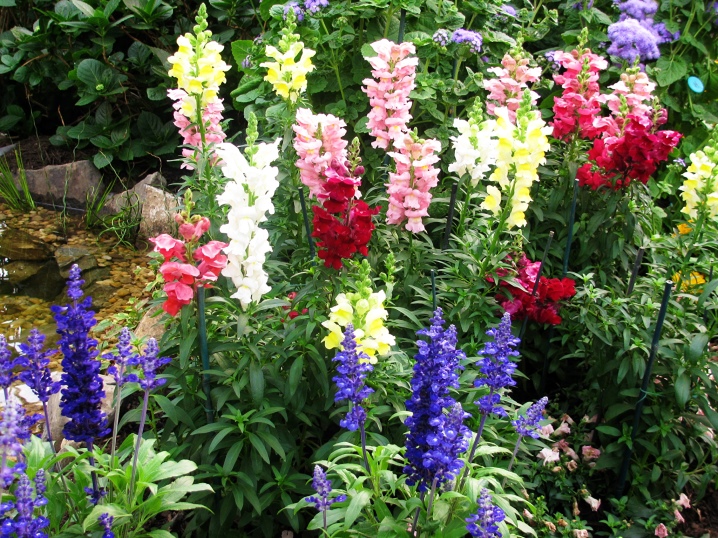
- Average. They grow up to 40-60 cm, are widely used in landscape design, bouquet cut. This category of flowers of the snapdragon genus is suitable for planting on different parts of the garden, ridges, borders. Popular varietal varieties include excellent "Golden Monarch" with lemon-colored flowers, pale pink Lipstick silver, Wild Rose, Red Chief.


- Stunted. This category of varieties is compact in size, growing from 25 to 40 cm in height. Flowers are used when decorating flower beds, border plantings. A stunted snapdragon is often found among the ampelous varieties. The most famous varieties include "Lampion"with excellent decorative characteristics.

- Dwarf. The most compact of the varieties, suitable for use as a home potted plant, stems no more than 20 cm in length. This is a beautiful curb plant, suitable for both planting in a flower bed and for potting.

In its ampelous form snapdragon was created by breeders specifically for decorating balconies and terraces with pots... This group of plants is very sensitive to growing conditions and needs regular maintenance of a comfortable temperature regime.
In this subspecies, the shoots hang down like lianas and reach a length of 100 cm. Spike-shaped brushes hang around a hanging planter or braid a flowerpot in a picturesque disorder and look very elegant at the same time.

Landing subtleties
In temperate climates, snapdragons are most often grown as an annual plant, given the long growing season. In the southern regions, large antirrinum can be planted before winter, in this case the seeds become more cold-resistant, hardened. Self-seeding in most cases is ineffective due to the splitting of the traits of the parent plant.
Features of pre-winter sowing:
- beginning no earlier than November, when the topsoil freezes;
- sowing in blocks of 25x30 cm;
- the density of the seed is higher than in spring;
- deepening by 0.5-1 cm;
- backfilling with peat mixture from compost and peat with sand;
- mulching with a thick (5-7 cm) layer of leaves.


In other cases, the time for landing is chosen based on the climatic zone. Without shelter, seeds are placed in the soil no earlier than the beginning of May in the middle lane. This method is only suitable for small varieties. The resulting seedlings will bloom much later than last year's self-garden. Sowing of antirrinum in containers at home is carried out from the 3rd decade of February - for giant and tall subspecies, in March - for plants of medium height and until April - for dwarf ones.
The warmer the climate in the region, the easier it is to solve the problem associated with planting a plant. Truth, self-gardening is not very useful for maintaining varietal traits. As for the temperate zone, here you can transfer a capricious snapdragon to a prepared flower bed no earlier than the beginning of summer. It is recommended to sow seeds in open ground only in subtropical or tropical climatic zones and do it in the spring, when the soil warms up properly.

The seeding rules step by step in this case will look like this.
- Soil preparation. It is carried out if the plants are first planned to be planted in a common container. It is also possible to grow seedlings in peat tablets until the transfer to permanent pots is performed. If a soil mixture is chosen, it is better to purchase a ready-made flower substrate.
When self-cooking, you need to take 1 part of the earth, 2 parts of peat and 0.5 parts of sand. You can additionally steam the soil for 1 hour before sowing to kill fungi. You can reduce the acidity of the soil with dolomite flour and wood ash.
- Preparing for landing. The substrate is placed in a prepared container, slightly moistened from above from a spray bottle, tamped down a little. The seeds are poured onto a sheet of paper folded in half, and then gently spread over the surface. It is not necessary to deepen them, but it is worth sprinkling lightly with a substrate with a layer thickness of up to 1 cm. Then the surface is moistened again.
- Germination. To create an optimal microclimate, it is imperative to cover the crops with glass or plastic wrap that transmits light well, and place them in a well-lit place with a temperature of +21 to +24 degrees Celsius. Periodically, the film is lifted to eliminate excess vapors, the soil is well moistened. Germination takes about 7 days.
- Care. Already hatched seedlings are recommended to be kept at temperatures from +16 to +19 degrees.Growth rates will be small at first and during this period you need to try to provide moderate watering, trying to apply moisture by the root method. You need to air the mini-greenhouse regularly. When the sprouts reach 7 days of age, shelter is no longer needed, but the delicate leaves become sensitive to sunlight and should be shaded.
- Thinning. If the seedling density is high enough, they can be thinned out with tweezers. A full-fledged pick is performed as soon as the 2nd leaf appears on the plants. At this point, you can plant each seedling in a personal container. When moving, the sprouts are buried 3 mm in the root area, lightly tamped.
- Growing. After moving to separate containers, the seedlings are watered, once every 2 weeks they are fertilized with liquid fertilizing. To do this, you can take ready-made fertilizers for flowers. To stimulate lush flowering, pinching is performed between the 4th and 5th pair of leaves, stimulating lateral branching.


It is recommended to transplant young plants to a flowerbed or to another prepared place no earlier than in the 3rd decade of May. If the night frosts do not stop, then you have to wait until the first summer days. Planting too early without shelter will lead to the complete death of all seedlings. It is recommended to harden young plants first, briefly taking them outside during the day.
The transplant will be easier for antirrinum, if you choose the right place for it. It is worth choosing sunny, well-lit fertile areas with a loose structure and slightly alkaline soil composition. In it, the roots will receive good development, and buds will form abundantly on the shoots.
If the soil composition is too heavy, it is recommended to lighten it by adding wood ash or dolomite flour. Before planting, a mineral complex on a potassium-phosphorus-nitrogen basis is introduced into the ground.

The process of transferring seedlings takes place in the following order:
- preparation of pits at a distance of 45 cm from each other for tall varieties, 20-30 cm - for medium and low;
- moving the snapdragon from the container to the hole;
- filling seedlings with earth, tamping;
- abundant watering;
- mulching the surface with peat.
With the right temperature conditions, you can achieve rapid rooting of the plant and wait for the snapdragon to bloom by mid-summer.


How to care?
Growing this beautiful flower does not require complex manipulations. The cultivation technology includes the simplest procedures: watering, feeding, removing wilted shoots, protecting against pests. Careful and regular loosening of the soil, mulching the soil to prevent weeds and dryness helps to grow healthy plants.
Tall varieties that require special attention are used for cutting. It is immediately necessary to grow ampelous varieties in special hanging containers. Dwarf forms can be bred in containers and decorate terraces and balconies with them.
At the same time, the agrotechnical measures required for any species are approximately the same. Tall varieties may only require an additional garter to the support.


Watering
Snapdragon doesn't need it often. An adult plant needs additional moisture exclusively during a drought period. Watering in this case is done in the evening. It is worth paying attention to the fact that after adding moisture, the soil must be thoroughly loosened, get rid of weeds.


Top dressing
The first top dressing is done immediately before planting the snapdragon. In the future, fertilizers need to be applied according to the following scheme:
- after rooting, organic matter and nitroammophoska are introduced;
- during the period of bud formation, a mixture of superphosphate, urea, potassium sulfate (25 g per 10 l) is used.
Timely application of fertilizers to the soil allows you to achieve abundant flowering and helps the plant to grow and develop correctly.


Care during and after flowering
The main care for snapdragons during flowering is to remove the arrows on which the bolls develop. If this is not done, the flowering period will be significantly reduced. When cutting, remove the arrow below the lowest flower. Then the plant will give new shoots and flower panicles.
The flowering period lasts a long time at the snapdragon, before the onset of autumn frosts. If the plant is planted as a perennial, in October it is cut almost to the root, leaving no more than 5-8 cm in length above the ground. The shoots remaining above the surface are covered with peat mixed with sawdust, covered with dry leaves.
An annual snapdragon needs to remove wilted buds and inflorescences throughout the flowering period to prevent self-seeding. As soon as all the flowers on the arrow fade, it must be completely cut off. In the fall, the remains of the plant are dug up and burned, the soil is dug up to the depth of the shovel bayonet.

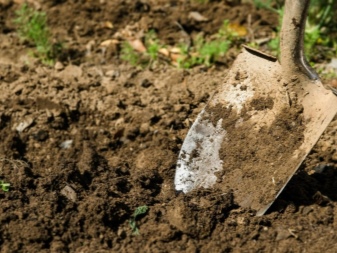
How and when to collect seeds?
In the south, snapdragon seeds ripen on their own. It is important to consider that they are collected no earlier than October. The collection of snapdragon seeds in central Russia is carried out at the stage of incomplete maturity. Seed pods ripen in a warm, well-ventilated room.
You need to collect planting material in an opaque paper bag. As soon as the fruits at the bottom of the peduncle ripen, its upper part is cut off, and a bag is put on the remaining "panicle" and wrapped in the lower part with thread. Next, the arrow is trimmed below the edge of the package.
The prepared seed is suspended in a warm, dry climate. When the seeds are fully ripe, they are poured into a bag and can be stored in the usual way.
It is recommended to send the seeds in dry cardboard boxes before planting. They are stored in a cool place in winter at a temperature not higher than +5 degrees. It is important that the planting material is not exposed to moisture.


Diseases and pests
The main sources of danger for anti-rhinum in the garden are poor care, excess moisture, insufficient light... If the roots of the plant have been overflowed in the garden, the risk of developing root rot. It is necessary to deal with it with the help of preventive treatment of seedlings with a means "Hom" at a concentration of 5 ml per 1 liter of water. For the first time, plants are watered in containers. Then, after transferring to open ground, the soil is re-cultivated using the concentrate in the same volume on an area of 10 m2.
When high humidity is established in summer in combination with lower temperatures, the plant may be affected rust. It can be recognized by the appearance of red spots on the surface of the leaves. If measures are not taken in time, the plant may die and infect other seedlings. Already affected parts of the shoots must be cut off and destroyed. The remaining plantings are processed Bordeaux liquid at a concentration of 1% or preparations with fungicidal action, for prevention use colloidal sulfur.
The appearance on the leaves of gray spots with a yellow border indicates a lesion with septoria. This infectious disease infects plants when the weather is hot and humid. As control measures, shoots are treated with Fundazol, Skor and other fungicides.
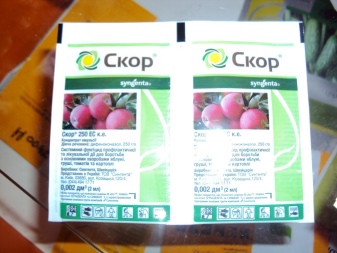
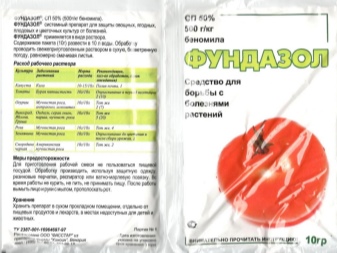
Snapdragon in the garden is attacked by a number of pests. Among the most dangerous of them are - avocado scale insect, rootworm nematode, scoop, aphid. Do not neglect its juicy flowers and leaves and slugs, which literally fill the garden in wet weather. These pests have to be collected by hand.
The process of treating the snapdragon from insects must be accompanied by the removal of the affected shoots. They are pruned and burned to protect neighboring plants. With a nematode, it is recommended to dig up the rhizome and destroy it along with the parasites. Bushes and the surface of the soil are treated with insecticidal preparations.



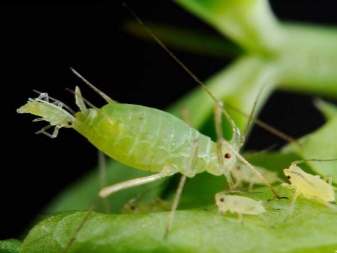
Next, watch a video about the intricacies of growing a snapdragon.







































































































The comment was sent successfully.